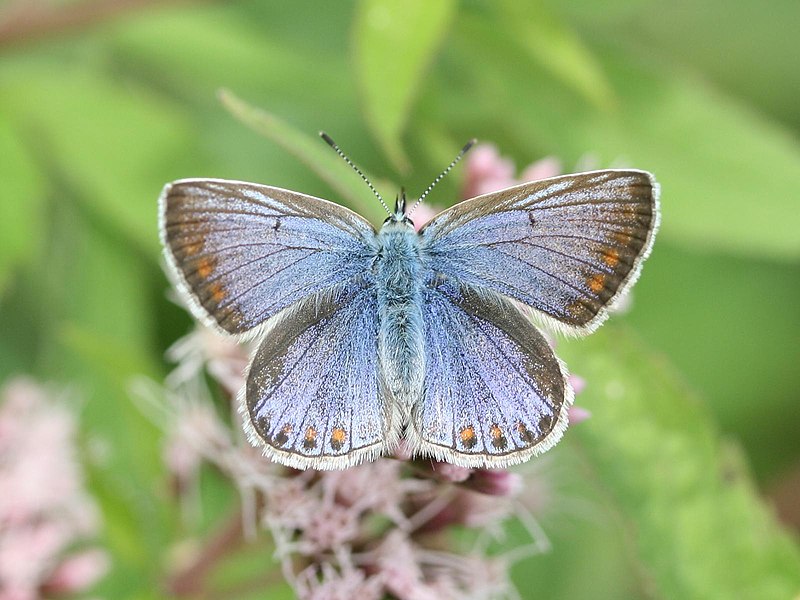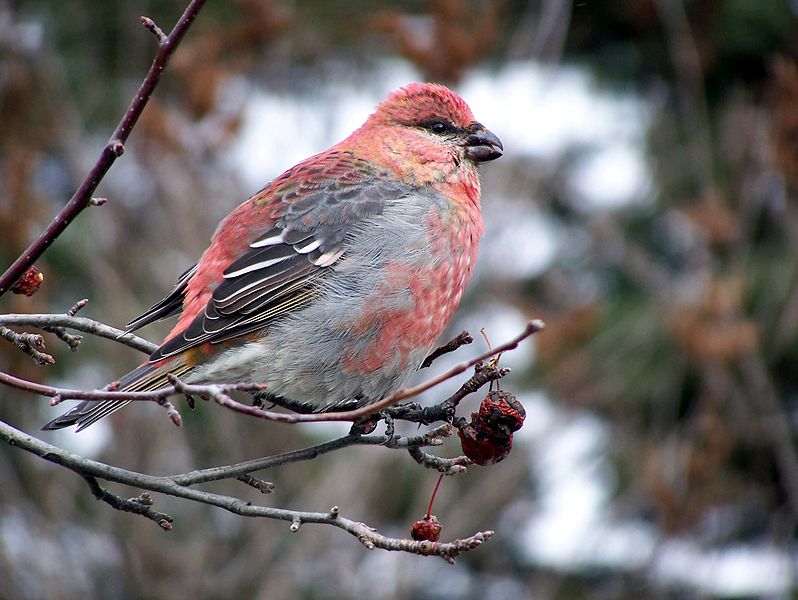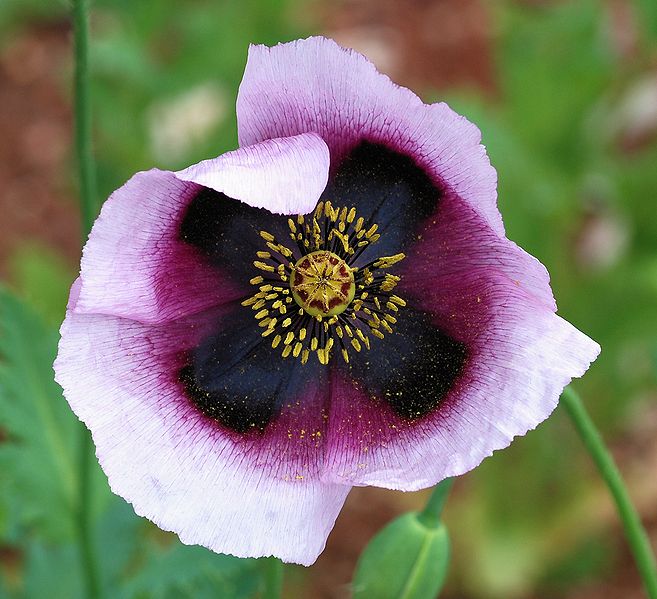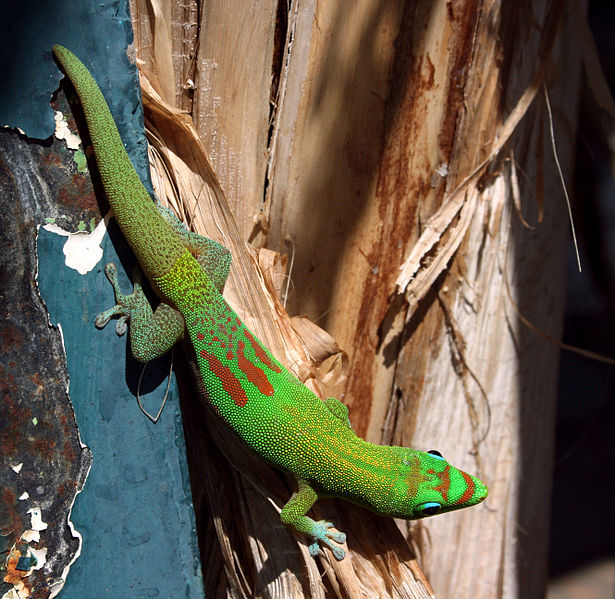.

Flat-headed Rock Agama (Agama mwanzae), Serengeti National Park, Tanzania: photo by Christian Mehlführer, 2006
Out of his absorption in the works of painters the need grew in Goethe to penetrate into the laws to which the phenomena of the sense of sight are subject.

Golden Conure (Guarouba guarouba), Gramado Zoo, southern Brazil: photo by Ironman br, 2010
Every painting presented him with riddles.
How does chiaroscuro relate to the colors? In what relationships do the individual colors stand to one another? Why does yellow give a happy mood, blue a serious one?
Out of the Newtonian theory of color there was no way of gaining a viewpoint from which these mysteries could be revealed. This view traces all colors back to light, arranges them sequentially side by side, and says nothing about their relationships to the dark, and also nothing about their living connections to each other.

Polyommatus icarus: photo by Kristian Peters, 2007
From insights gained along his own path, Goethe was able to solve the riddles which art had posed him.

Pine Grosbeak (Pinicola enucleator): photo by 7242scott/Papa Lima Whiskey, 2007
Yellow must possess a happy, cheerful, mildly stimulating character, for it is the color closest to light. It arises through the slightest toning down of the light.

Blue points to the dark which works in it. Therefore it gives a feeling of cold just as “it also reminds one of shadows.”
Reddish yellow arises through the intensification of yellow toward the dark pole. Through this intensification its energy grows. The happy, cheerful feeling passes over into the blissful. As soon as the intensification goes still further, from reddish yellow into yellowish red, the happy, blissful feeling transforms itself into the impression of something forceful.
Inachis io on Arctium tomentosum seen in meadow close to Uggleviksskällan, Lill-Jansskogen, Sweden: photo by Korall, 2009
Violet is blue which is striving toward the bright.

Opium poppy (Papaver) flower, showing bud and fruit in background: photo by Alvesgaspar, 2010
Through this the restfulness and cold of blue become restlessness. In bluish red this restlessness experiences a further increase.
Pure red stands in the middle between yellowish red and bluish red. The storminess of the yellow appears lessened, the languid restfulness of the blue enlivens itself. The red gives the impression of ideal contentment, of the equalizing of opposites.

European Peacock (Inachis io): photo by Michael Apel, 2007
A feeling of contentment also arises through green, which is a mixture of yellow and blue. But because here the cheerfulness of the yellow is not intensified, and the restfulness of the blue is not disturbed by a reddish tone, the contentment will be a purer one than that which red brings forth.
Text from Goethe's World View: Chapter III: The Phenomena of the World of Colours: Rudolf Steiner, 1897




